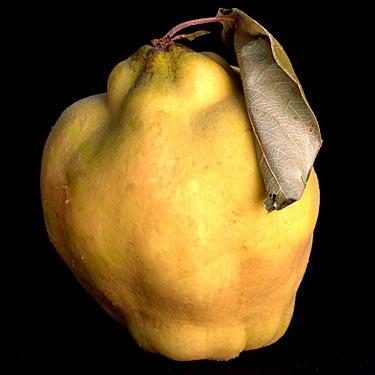Quince. I’m happy you are in season again! It’s Autumn and nature is starting to gently turn inward in readiness for a big winter slumber. Seasonal foods such as quince, apples and pears are ready to be eaten, and are delicious when stewed with warming aromatic spices like cinnamon, cloves and ginger. Stewed quince provide us with warmth as well as nourishment – they are rich in vitamin C and fibre and also contain small amounts of iron and magnesium.
I was given some beautiful yellow quince the other day and their gentle rose like smell has started to permeate the kitchen. I’m going to cook them this weekend to enjoy on Easter Sunday.
This old-fashioned fruit has had a revival in Australia in recent years, thanks to Maggie Beer and Stephanie Alexander – quince paste anyone?! Although I am partial to the occasional consumption of quince paste, I do find it to be way too sweet. A healthier and much less sugary quince recipe is outlined later in this post.
But first, let us take a mini-historical tour of the quince. Quinces have been cultivated for centuries and they are thought to be native to Persia and Greece. Pliny, the Roman author, naturalist and natural philosopher stated that the fruit “warded off the influence of the evil eye”, and in Greek and Roman times the quince was sacred to Venus, and was regarded as a symbol of love and happiness.
Don’t be fooled by the knobbly appearance of quince. In its raw form quince are virtually inedible as they are very hard, sour and astringent. Once you peel away the yellow skin its colour is much like the flesh of a pear, but once it is slowly cooked it transforms and takes on a whole new appearance – the resulting colour is a beautiful deep pink. The quince resides in the botanical family Rosaceae, the same family as the rose, pear and apple. This helps to explain the delicate rose like aroma that becomes stronger as the fruit ripen, and also as they are cooked.
Medicinal actions and uses
Before the invention of pharmaceutical drugs people literally turned food into medicine. This concept is a cornerstone of naturopathy – known as food as medicine, and where appropriate I encourage my patients to use food in this way.
My trusty A Modern Herbal by Mrs Grieve reveals some of the traditional uses of the quince.
Quince used to be made into syrup to help reduce diarrhoea. Traditionally foods and herbs that displayed astringent properties were used to help manage diarrhoea (astringent substances have a binding and constricting action on mucous membranes and tissues).
Quince seeds were also used for their action as a mucilage and demulcent. When the seeds are soaked in water they swell up (similar to linseeds and chia seeds). They have a soothing effect on the mucous membranes of the digestive, respiratory and urinary tracts.
Quince recipe
Saffron quince and brazil nut crumble
(from Dawn Whitten (Naturopath) – Gould’s Natural Medicine Clinic, Hobart, Tasmania)
Ingredients
To be stewed:
2 medium quince chopped with skin and core
4 medium apples chopped with skin without core
½ cup of filtered water
8 saffron threads crushed on a tablespoon
2 cloves
1 small cinnamon quill
¼ to ½ cup of berries: blackberries, blueberries, black currants and or raspberries (frozen or fresh) to be added last
Topping:
8 Brazil nuts chopped
12 Almonds chopped
2½ Tablespoons of coconut shredded and sulphur free
4-6 Tablespoons of ground flaxseeds
1 Tablespoon of chia seeds
Method:
In a saucepan combine all of the ingredients in the “to be stewed” list and simmer on low heat with lid on until the quince is lovely and soft (about 40 minutes). Stir occasionally. Turn the heat off and stir in berries. Meanwhile combine topping ingredients in a bowl. Serve stewed fruit in bowls and generously top with dry ingredients. Serves four. Enjoy!
Enjoy this special time of year, and I hope you have a relaxing Easter (with a sprinkling of chocolate and hot cross buns alongside your quinces – it’s all about balance right?!),
Gabriella
I’ll leave you now with a bit of quince related fun from “The owl and the pussycat” by Edward Lear – although I must say I’m not partial to quince with mince!!! I’ll leave that for the owls and cats……
“They dined on mince, and slices of quince,
Which they ate with a runcible spoon;
And hand in hand, on the edge of the sand,
They danced by the light of the moon,
The moon, The moon, They danced by the light of the moon.”
References:
A Modern Herbal – Mrs M Grieve
Image from the LA Times
Subscribe to receive updates on more articles.
[contact-form-7 id="48" title="Subscribe"]